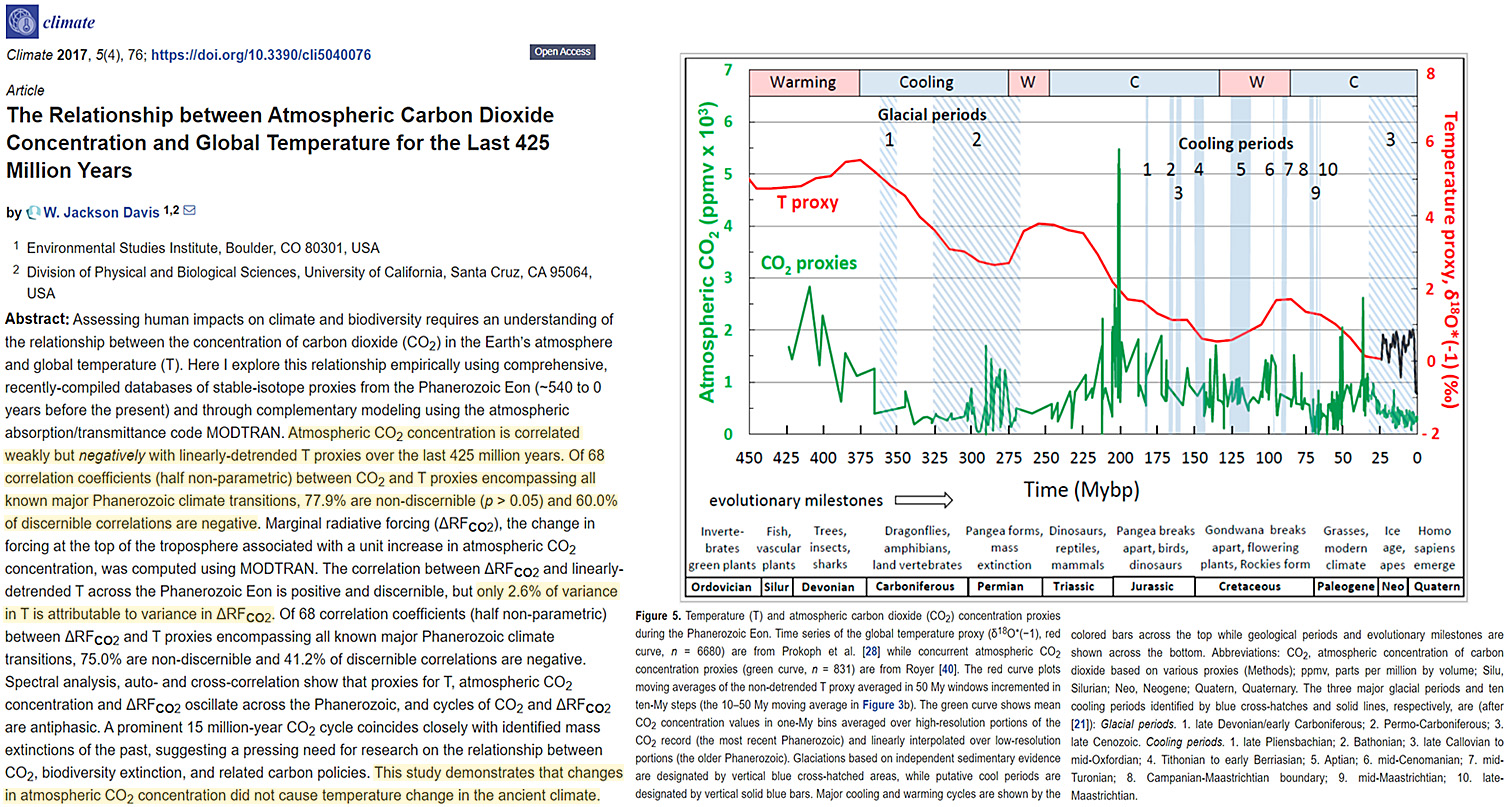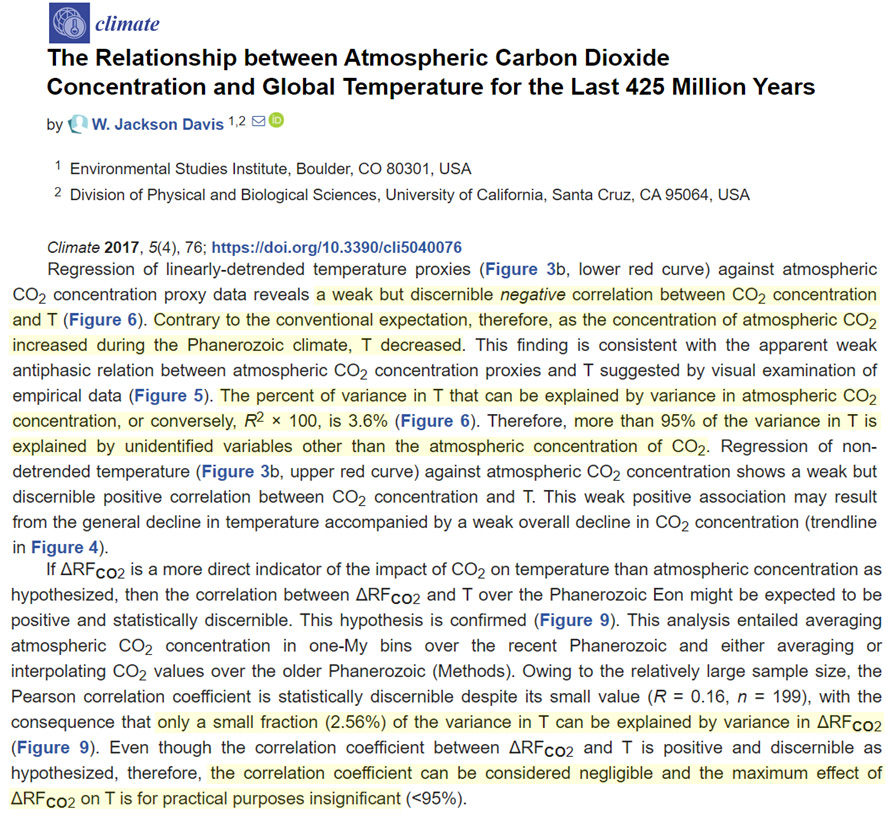We have updated our “Extremely Low CO2 Climate Sensitivity” scientific paper list with new papers added from 2021 and some newly discovered papers from the past.
As of 2016 this list had only 50 papers on it (as indicated by the web address). In less than 6 years the list has grown to 137 (as of today).
Click on the link for the full list.
135+ Papers Find Extremely Low CO2 Climate Sensitivity
A few of the sample papers are shown here.
Coe et al., 2021 (2XCO2 [400 to 800 ppm] = 0.5°C)
The HITRAN database of gaseous absorption spectra enables the absorption of earth radiation at its current temperature of 288K to be accurately determined for each individual atmospheric constituent and also for the combined absorption of the atmosphere as a whole. From this data it is concluded that H2O is responsible for 29.4K of the 33K warming, with CO2 contributing 3.3K and CH4 and N2O combined just 0.3K. Climate sensitivity to future increases in CO2 concentration is calculated to be 0.50K, including the positive feedback effects of H2O, while climate sensitivities to CH4 and N2O are almost undetectable at 0.06K and 0.08K respectively. This result strongly suggests that increasing levels of CO2 will not lead to significant changes in earth temperature and that increases in CH4 and N2O will have very little discernable impact.
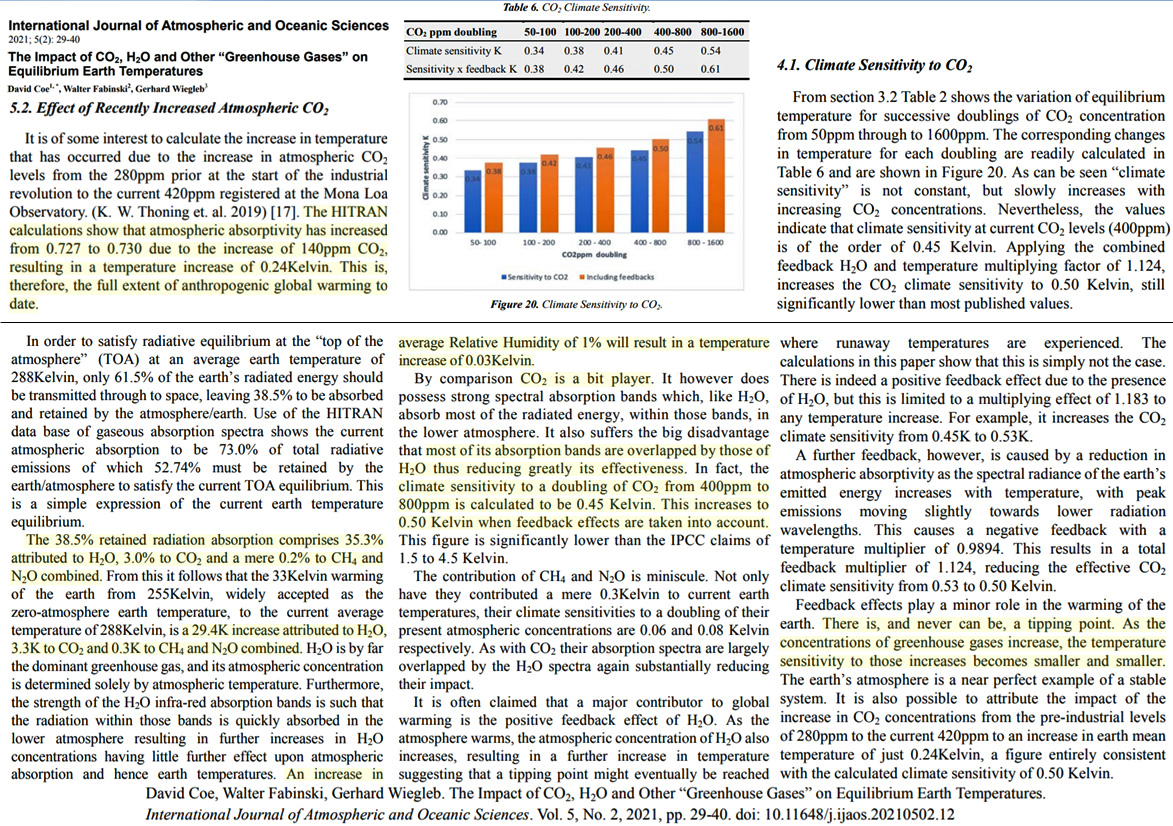
Schildknecht, 2020 (2XCO2 = 0.5°C)
Based on new radiative transfer numerical evaluations, we reconsider an argument presented by Schack in 1972 that says that saturation of the absorption of infrared radiation by carbon dioxide in the atmosphere sets in as soon as the relative concentration of carbon dioxide exceeds a lower limit of approximately 300 ppm. We provide a concise brief and explicit representation of the greenhouse effect of the earth’s atmosphere. We find an equilibrium climate sensitivity (temperature increase ∆T due to doubling of atmospheric CO2 concentration) of ∆T ≃ 0.5°C. We elaborate on the consistency of these results on ∆T with results observationally obtained by satellite-based measurements of short-time radiation-flux versus surface-temperature changes. … The absorption reaches values close to 100% for a realistic CO2 content of 0.03%, it is concluded that any further increase of (anthropogenic) CO2 cannot lead to an appreciably stronger absorption of radiation, and consequently cannot affect the earth’s climate. … [T]he effect of an anthropogenic CO2 increase on the climate on earth is fairly negligible.
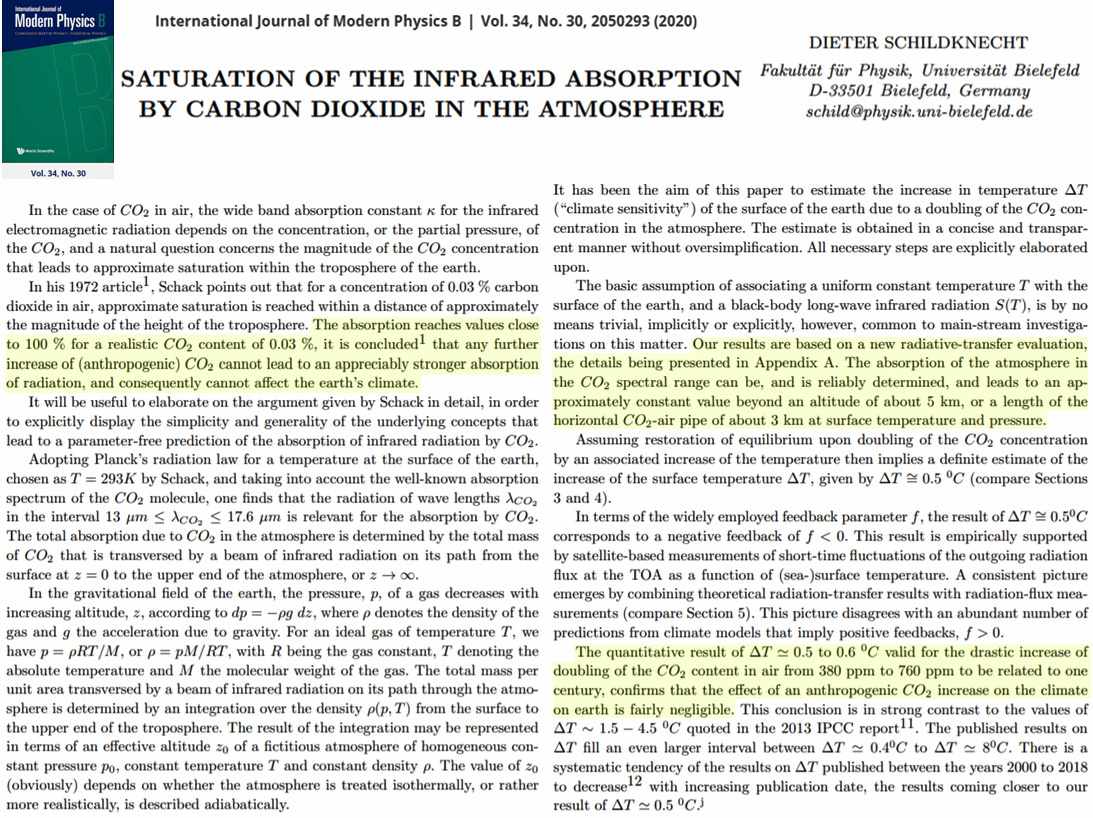
Easterbrook, 2016
CO2 makes up only a tiny portion of the atmosphere (0.040%) and constitutes only 3.6% of the greenhouse effect. The atmospheric content of CO2 has increased only 0.008% since emissions began to soar after 1945. Such a tiny increment of increase in CO2 cannot cause the 10°F increase in temperature predicted by CO2 advocates. Computer climate modelers build into their models a high water vapor component, which they claim is due to increased atmospheric water vapor caused by very small warming from CO2, and since water vapor makes up 90–95% of the greenhouse effect, they claim the result will be warming. The problem is that atmospheric water vapor has actually declined since 1948, not increased as demanded by climate models. If CO2 causes global warming, then CO2 should always precede warming when the Earth’s climate warms up after an ice age. However, in all cases, CO2 lags warming by ∼800 years. Shorter time spans show the same thing—warming always precedes an increase in CO2 and therefore it cannot be the cause of the warming.
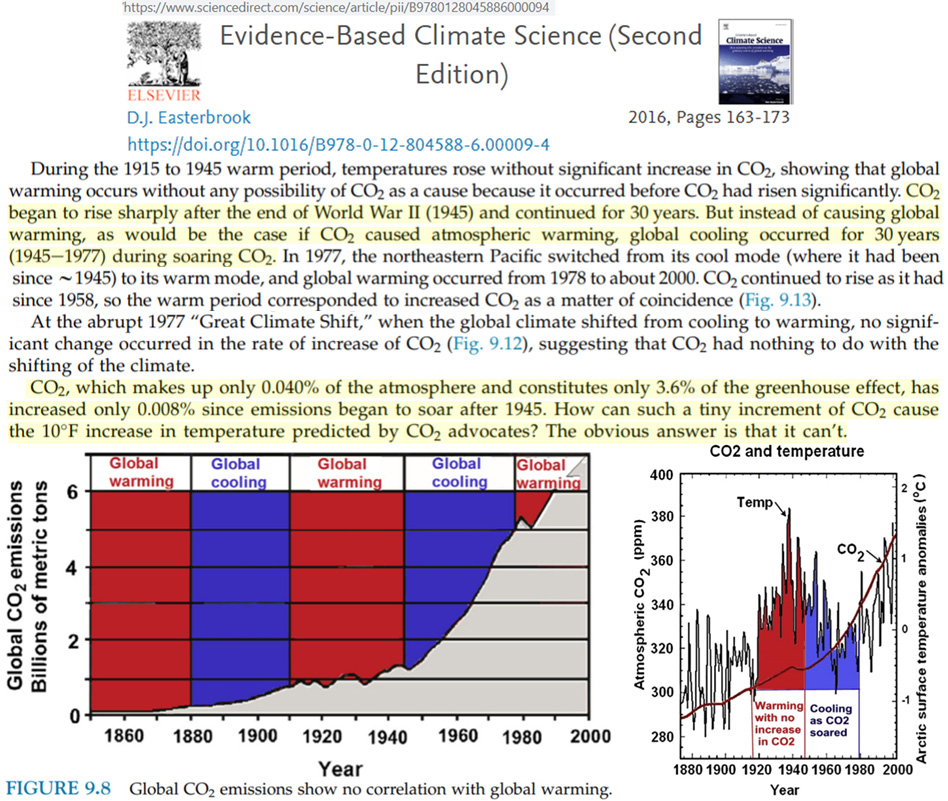
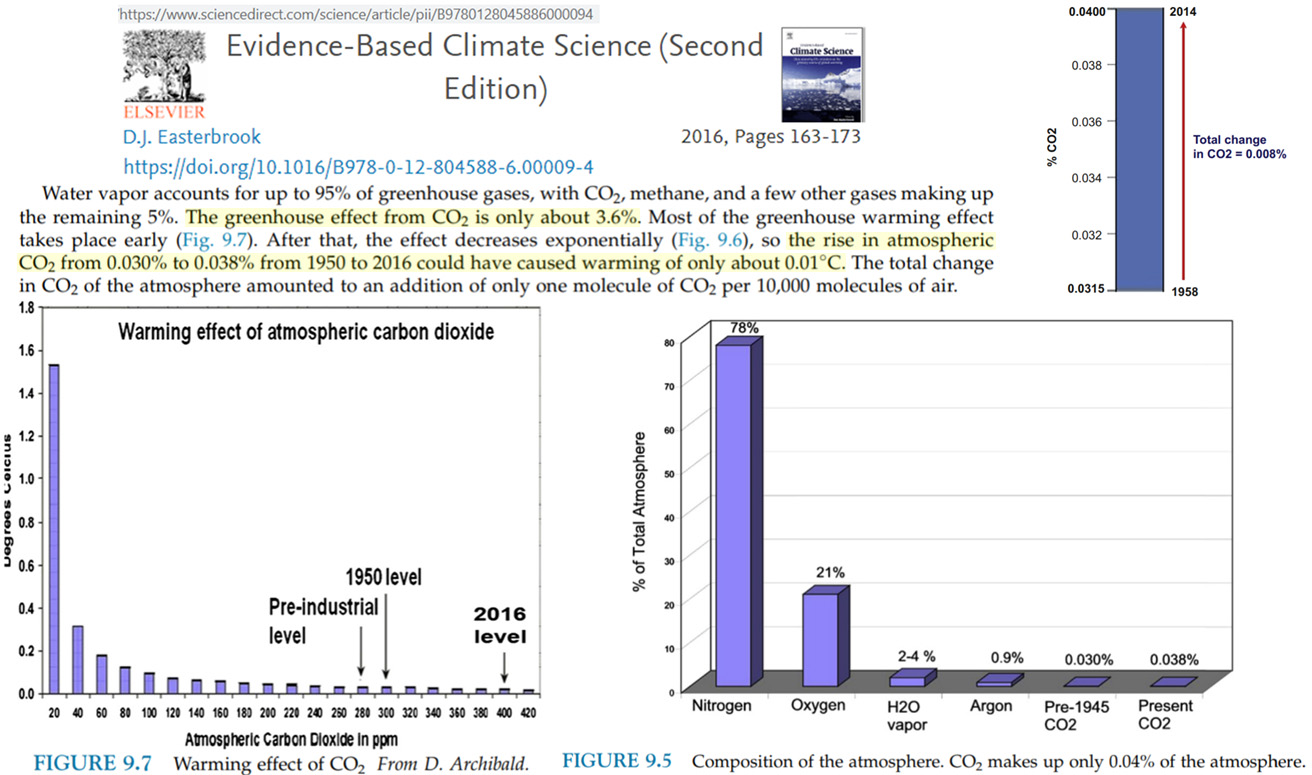
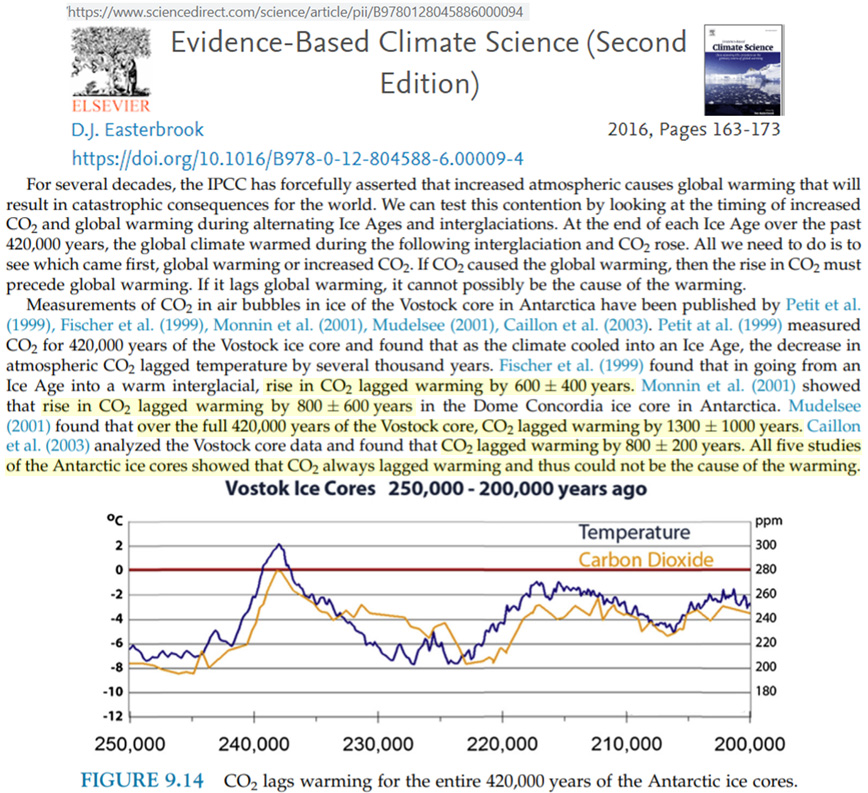
Davis, 2017
The correlation between ΔRFCO2 and linearly-detrended T across the Phanerozoic Eon is positive and discernible, but only 2.6% of variance in T is attributable to variance in ΔRFCO2. Of 68 correlation coefficients (half non-parametric) between ΔRFCO2 and T proxies encompassing all known major Phanerozoic climate transitions, 75.0% are non-discernible and 41.2% of discernible correlations are negative. Spectral analysis, auto- and cross-correlation show that proxies for T, atmospheric CO2 concentration and ΔRFCO2 oscillate across the Phanerozoic, and cycles of CO2 and ΔRFCO2 are antiphasic. A prominent 15 million-year CO2 cycle coincides closely with identified mass extinctions of the past, suggesting a pressing need for research on the relationship between CO2, biodiversity extinction, and related carbon policies. This study demonstrates that changes in atmospheric CO2 concentration did not cause temperature change in the ancient climate.
